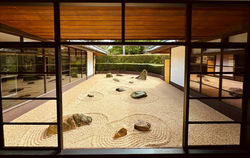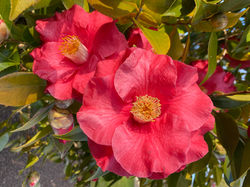
Admission Prices:
-
Adults $22.00
-
Concession $17.00
-
Family $52.00
-
Student $17.00
-
Locals $17.00
-
Children $12.00
-
Children under 5 years FREE
Please email info@cowragarden.com.au for tour group booking prices
We are a registered charity, and donations of $2 or more are eligible for tax deductions.
Opening Hours 8.30am- 5.00pm
 |  |  |  |  |  |
|---|---|---|---|---|---|
 |  |  |  |  |
Frequently Asked Questions
🎟️ Can I Pre-Purchase Tickets Before I Visit?
Yes, you certainly can!
Click the button below to secure your tickets in advance and breeze through the entry gates.
Prefer to decide on the day? You're welcome to purchase tickets on arrival too.
🌸 Ticket Prices
Category Price
Adults $20
Concession$ 15
Students $15
Children (Under 18) $10
Children Under 5 FREE
Family Pass $50
Local Residents$15 (proof required)
Can we bring our dog to the garden?
🐾 Visiting with Your Dog
We love welcoming well-behaved furry friends!
Dogs are welcome in the Garden and the outdoor area of the Café, provided they remain on a lead at all times.
Please help us keep the grounds beautiful by picking up after your pet.
Note: Dogs are not permitted inside the Cultural Centre.
How Long Does It Take to Walk Around the Garden?
We recommend allowing 45 minutes to an hour to fully enjoy the Garden’s tranquil beauty.
If you're short on time, a 30-minute stroll will still offer a lovely glimpse.
Or, take your time—many guests spend half a day or more, relaxing under the trees, enjoying a picnic, or savoring takeaway from the Café.
🌸 Did You Know?
The Garden’s winding paths stretch 2.4 kilometers, designed with gentle curves inspired by Japanese tradition—because spirits don’t walk on crooked paths.
And yes, it’s true:
Cowra Japanese Garden is the largest Japanese garden in the Southern Hemisphere.
A living masterpiece of peace, culture, and seasonal beauty.
When is the best time to visit the garden?
🌸 A Garden for All Seasons
Any time of year is a wonderful time to visit the Cowra Japanese Garden and Cultural Centre.
Japanese gardens are thoughtfully designed to reflect nature’s beauty in every season—each offering its own unique charm.
🌱 Spring
Fresh greenery and delicate blossoms awaken the senses.
Cherry blossoms bloom in late September to early October, followed by vibrant azalea, camellia, and wisteria in late spring.
☀️ Summer
A tranquil sea of green creates a soothing, uninterrupted visual experience.
The garden becomes a peaceful retreat beneath sunlit canopies.
🍁 Autumn
A celebration of colour and reflection.
Fiery reds, golds, and ambers mark the transition from the abundance of life to the quiet of winter.
❄️ Winter
The garden’s purest form is revealed.
Stripped of foliage, its structure and spirit shine through—offering stillness, clarity, and contemplative beauty.
Whether you're seeking seasonal blooms, serene strolls, or a moment of reflection, the Garden welcomes you year-round.
When do the Cherry Blossoms Flower?
🌸 Cherry Blossom Season at Cowra Japanese Garden
Each year, the Garden transforms into a breathtaking sea of pink and white as the Cherry Blossoms bloom from mid to late September, depending on the season.
By late September to early October, the Garden is typically in full bloom, offering a truly unforgettable experience.
To celebrate this fleeting beauty, we host our annual Sakura Matsuri (Cherry Blossom Festival) on the last weekend of September—a joyful tribute to Japanese culture, nature, and community.
🌸 Fun Fact
As you enter the Garden, take a moment to admire the weeping cherry trees on the left, now 12 years old, and the majestic Fuji cherry tree on the right, standing proudly at approximately 40 years old.
They are living symbols of time, tradition, and renewal.
Do we hire Golf Buggies, Scooters or Wheelchairs
♿ Accessibility Update
While we no longer offer golf buggy hire, we’re working on introducing a mobility scooter to support visitor comfort and access.
We’ll share updates as soon as this service is finalised.
In the meantime, we do have one wheelchair available for guest use—please speak to our team on arrival if you’d like to arrange it.
How many Gardeners are there?
Meet the Heart Behind the Garden
It’s hard to believe, but the breathtaking beauty of the Cowra Japanese Garden is maintained by just four full-time gardeners, one part-time cleaner/gardener, and one incredible volunteer.
Together, this small but mighty team nurtures over five hectares of seasonal splendour, ensuring every blossom, stone, and water feature reflects the Garden’s tranquil spirit.
Their work is quiet, constant, and deeply skilled—an unseen artistry that makes every visit unforgettable.
What type of grass is in the garden?
🌾 The Living Canvas Beneath Your Feet
The lush lawns of the Cowra Japanese Garden are made up of Kikuyu grass (Cenchrus clandestinus), carefully oversewn with cool-season varieties to ensure year-round vibrancy.
But this serene green isn’t effortless—it’s the result of extraordinary dedication.
🌟 Garden Care Fun Facts
• Mowing a full cycle takes approximately 15 hours, and during peak growing months, the Garden may be mown twice a week.
• Whipper snipping along paths and garden edges takes 18 hours weekly—precision work that keeps every curve crisp.
• The hedges are sculpted to reflect the rolling hills of Japan, with pine trees and trimmed greenery symbolising the journey from mountains to ocean—a living tribute to traditional Japanese landscape design.
Every blade, branch, and contour is part of a story—crafted by a small, skilled team whose quiet artistry brings the Garden to life.
Is the garden watered and where does the water come from?
💧 How the Garden Stays Green
The Cowra Japanese Garden is watered year-round using raw water supplied by Cowra Shire Council, drawn from the Lachlan River—a vital lifeline that nourishes every tree, blossom, and blade of grass.
🌟 Watering Wonders – Fun Facts
• The Garden runs on four powerful 11-kilowatt pumps, each capable of moving 40 litres per second.
• There are two separate irrigation systems, each with its own pump site:
• One system powers watering.
• The other powers the waterfalls.
• Both the top and bottom lakes have dedicated irrigation and waterfall pumps.
• The lakes operate during business hours, while irrigation runs after hours, ensuring minimal disruption to the peaceful visitor experience.
Behind the tranquil scenes, a symphony of engineering keeps the Garden thriving—quietly, efficiently, and beautifully.
Why was the site chosen to build the garden?
The location of the Cowra Japanese Garden was carefully selected for its natural terrain and striking geological features, which offered the perfect canvas to replicate the serene landscapes of Japan.
At the top of the hill stand two majestic stones—Yogoseike and Shugoseike—whose presence shaped the entire design of the Garden.
🌟 Fun Fact
These stones are considered the heroes of the Garden.
Rather than being placed into the landscape, the Garden was built around them, honoring their timeless strength and spiritual symbolism.
Their quiet grandeur continues to guide the flow of paths, water, and plantings—anchoring the Garden’s soul in place.
🏯 Who Designed the Cowra Japanese Garden?
In 1977, the Cowra Japanese Garden was entrusted to the vision of Ken Nakajima, a world-renowned Japanese landscape architect.
His work spans the globe, with celebrated gardens in Montreal, San Diego, Moscow, and Houston—each a testament to his mastery of harmony, symbolism, and cultural storytelling.
Nakajima’s firm, Consolidated Garden Research Inc. of Japan, was internationally acclaimed for its dedication to traditional Japanese garden design.
🌸 A Garden Rooted in History
The Cowra Japanese Garden is modeled after the first strolling garden built by Shogun Tokugawa in the 16th century Edo period—what is now modern-day Tokyo.
Its layout reflects a journey:
• The lower sections resemble formal city gardens.
• As you ascend, the design becomes more natural and mountainous, echoing Japan’s landscapes from urban plains to alpine peaks.
🌟 Fun Facts & Symbolism
• Ken Nakajima considered Cowra his favorite garden—so much so that his ashes were scattered here, forever entwining his spirit with the land.
• The gum trees within the Garden are a poignant tribute to the Australian soldiers who lost their lives during the Cowra Breakout.
• The Garden’s design is a living narrative—blending Japanese tradition with Australian remembrance.
🧘♀️ The Meaning Behind the White Raked Stones?
The white stones you see in the Garden form part of a Japanese rock garden, known as karesansui or “dry landscape” garden—often referred to as a Zen garden.
These gardens are miniature, stylised landscapes created through carefully placed rocks and raked gravel, which symbolises ripples in water.
The act of raking itself is meditative, inviting stillness and reflection.
🌿 A Tradition Rooted in Time
Zen gardens have existed in Japan since at least the Heian Period (784–1185), and continue to be cherished for their simplicity, symbolism, and spiritual depth.
🌟 Fun Fact
The Garden isn’t designed to teach—it’s designed to make you feel.
It’s a fusion of Japan and Australia, where emotion, nature, and culture meet in quiet harmony.
🏠 Who Designed the Japanese Buildings?
The elegant Japanese buildings throughout the Garden were designed by world-renowned architects Takeo Adachi and Tatsushi Aono, whose work reflects the timeless principles of traditional Japanese architecture.
Their designs seamlessly blend form and function, creating spaces that invite reflection, harmony, and connection with nature.
🌟 Fun Fact
You might notice something unusual—there are no gutters on these buildings.
In traditional Japanese design, this allows snow to fall freely from the roof, preserving the purity of the structure.
The white stones beneath the eaves serve a practical and aesthetic purpose: they collect and disperse water, echoing the natural flow of rain and snow in mountain villages.
These buildings are more than structures—they’re expressions of philosophy, seasonality, and the fusion of Japanese tradition with the Australian landscape.